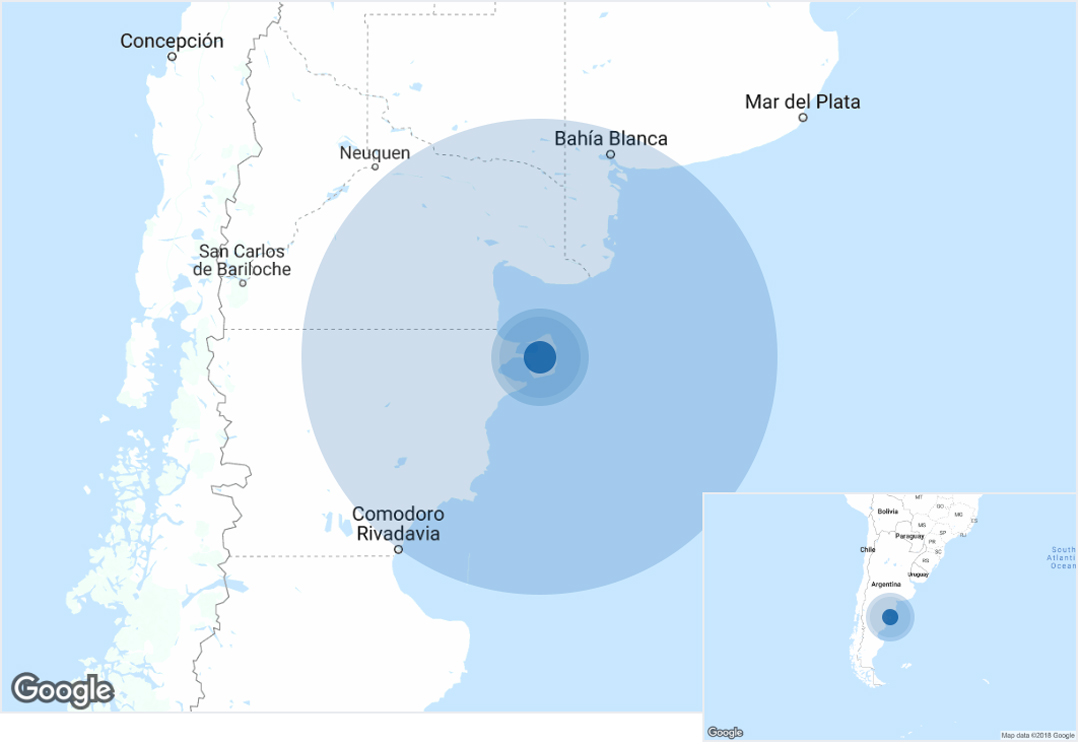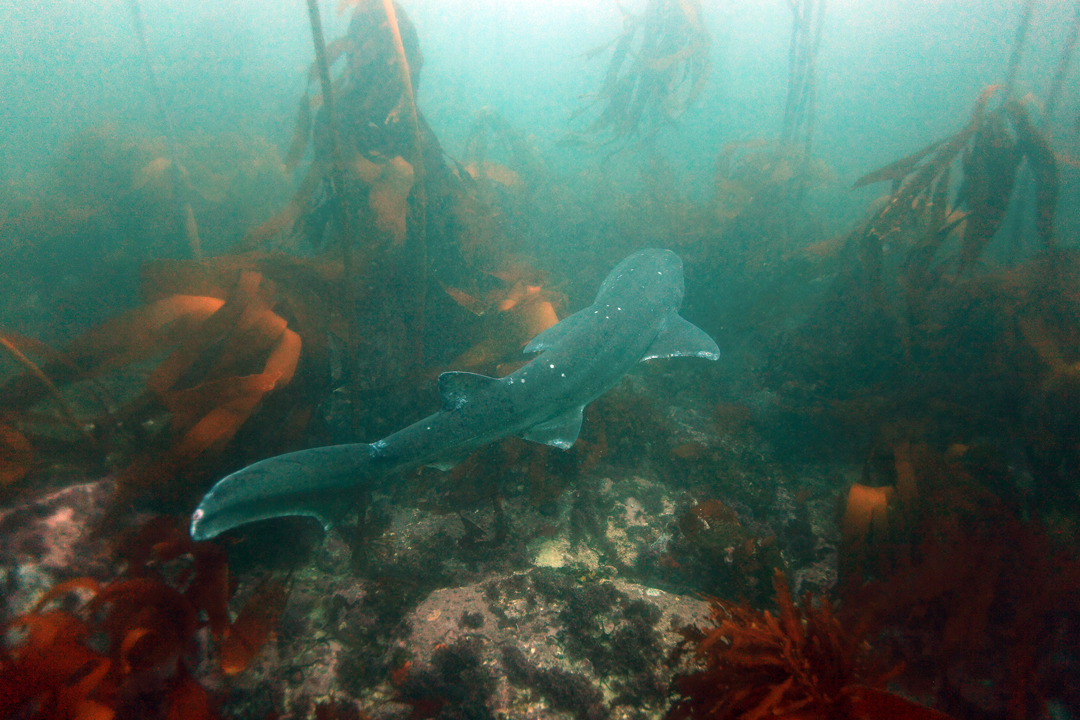Following Patagonia’s sevengill sharks
An otherworldly ocean creature from the ancient Hexanchiformes lineage, the broadnose sevengill shark (Notorynchus cepedianus) is listed as Data Deficient on the IUCN RedList. In the absence of good information about these migratory sharks, found in temperate seas around the world, the species remains vulnerable to overfishing. In Argentina’s coastal seas, reports detail that sevengill shark populations have been in serious decline over the past 40 years.
 A new paper published in Marine Ecology Progress Series (MEPS) in September explores the movement patterns and population structure of sevengill sharks in a bay in northern Patagonia. The findings contribute to our understanding of these sharks’ lives, which means we can better manage their populations in the future. Lead author Alejo Irigoyen and his colleagues investigated sevengill shark populations at Punta Bajo (Caleta Valdés), Argentina. Caleta Valdés is a northern marine bay in Patagonia, part of Argentina’s Valdés peninsula. The region is a UNESCO World Heritage site, home to a startling array of mammals and birds. In spite of its special status, there is still a need for baseline data to help inform marine spatial planning in the area.
A new paper published in Marine Ecology Progress Series (MEPS) in September explores the movement patterns and population structure of sevengill sharks in a bay in northern Patagonia. The findings contribute to our understanding of these sharks’ lives, which means we can better manage their populations in the future. Lead author Alejo Irigoyen and his colleagues investigated sevengill shark populations at Punta Bajo (Caleta Valdés), Argentina. Caleta Valdés is a northern marine bay in Patagonia, part of Argentina’s Valdés peninsula. The region is a UNESCO World Heritage site, home to a startling array of mammals and birds. In spite of its special status, there is still a need for baseline data to help inform marine spatial planning in the area.

Photo © Thomas Kotouc | Shutterstock
Here is a summary of some of the key findings from Alejo Irigoyen’s new publication:
- Sevengill sharks are found year-round in Caleta Valdés.
- The number of sevengill sharks peaks in the bay in late spring; at the same time that southern elephant seals arrive at the Valdes peninsula to breed and moult, with their pups learning to swim in late spring. The number of sharks in the bay seems to be linked to this availability of prey.
- Mating scars found on big female sevengill sharks also suggest that these animals are using the bay to mate and breed.
- In summer and autumn, the number of sharks in the bay is lower; presumably, a number of these animals leave Caleta Valdés to hunt prey like sea lions outside the bay.
- The number of females was higher than the number of males in the bay year-round.
- Adult sevengill sharks outnumbered juvenile sevengill sharks in the bay.
- Sevengills were the only shark species found in 50 hours of BRUVs footage filmed by Irigoyen and his colleagues. This suggests that in the confines of the bay, such a concentration of this species has forced other species out, including youngsters from their own group.
- It appears that sevengill sharks in the Southwest Atlantic are smaller, on average, than their counterparts found in the waters off North America, Tasmania and South Africa.

Photo © Alessandro De Maddalena | Shutterstock
Protection of the waters of the Valdés peninsula is critical: it’s an important habitat for sevengill sharks, and their historical decline in Argentinian waters puts their population at risk. Alejo and his co-authors highlight that these findings show that the region must stay high on the priority list for government protection.
You can read the full paper here.
Reference: Irigoyen, A. J., De Wysiecki, A. M., Trobbiani, G., Bovcon, N., Awruch, C. A., Argemi, F., & Jaureguizar, A. J. 2018. Habitat use, seasonality and demography of an apex predator: sevengill shark Notorynchus cepedianus in northern Patagonia. Marine Ecology Progress Series, 603, 147-160.
